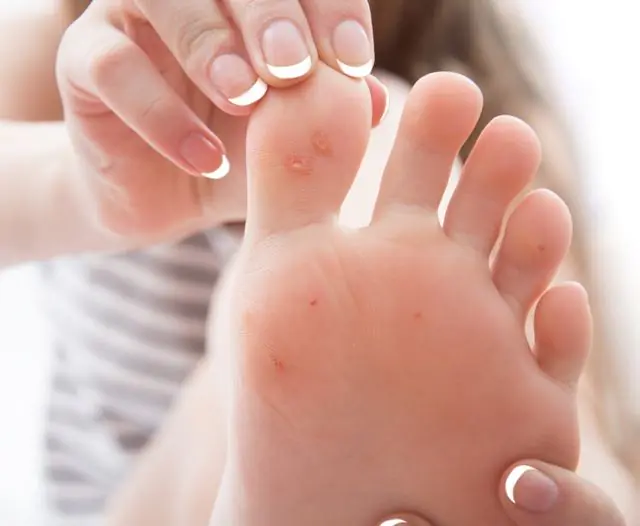
- Why do they appear?
- What do plantar warts look like?
- Treatment methods
- Medicines
- Removal of plantar warts
- Folk remedies
- Prevention
A plantar wart is a fairly common viral skin lesion in humans. There is a myth that warts are spread from human contact with frogs. However, this is not at all true. The only way to “get” a plantar wart is to become infected with human papillomavirus.
Why do plantar warts appear?
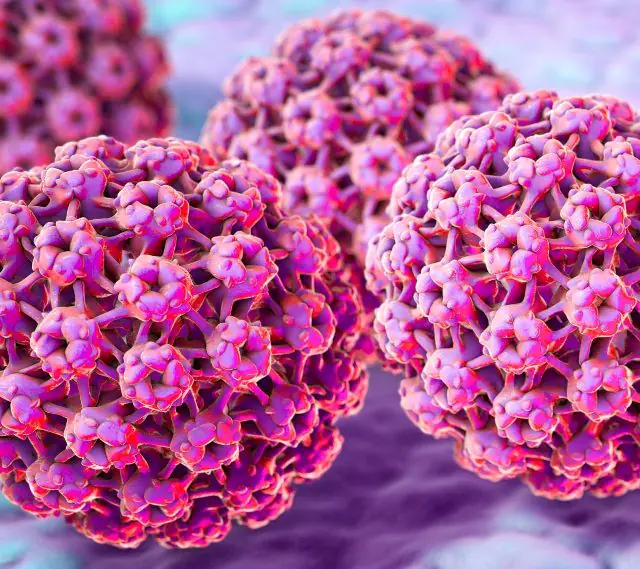
Plantar warts are benign growths on the epidermis of the feet. They are caused by the activity of the human papilloma virus in the body. As a rule, strains 1, 2, 4, 27, 57 are responsible for the appearance of these neoplasms.
Transmission of infection most often occurs through direct contact of a healthy person with an infected person. Also, sometimes HPV can enter the body while walking barefoot on contaminated floors in public bathrooms, swimming pools, locker rooms, and the ground. A small scratch, abrasion or cut is enough for the virus to enter the body.
However, infection with HPV does not mean that warts will immediately appear on the skin. This pathogen has a fairly long incubation period - from several weeks to several months.
Various factors can provoke the appearance of plantar warts: reduced immunity, chronic infectious diseases, hypothermia, etc. In addition, people with hyperhidrosis (increased sweating), wearing uncomfortable shoes, with various foot deformities (flat feet, arthritis, osteoarthritis), and with ailments that disrupt the trophism of the legs (high blood sugar, varicose veins, atherosclerosis) are at risk.
Finding a formed wart on the sole or fingers is sometimes also difficult. Pressure on this part of the leg can provoke growth of the tumor into the stratum corneum, and over a long period of time the growth will progress and affect new areas.
What do plantar warts look like?
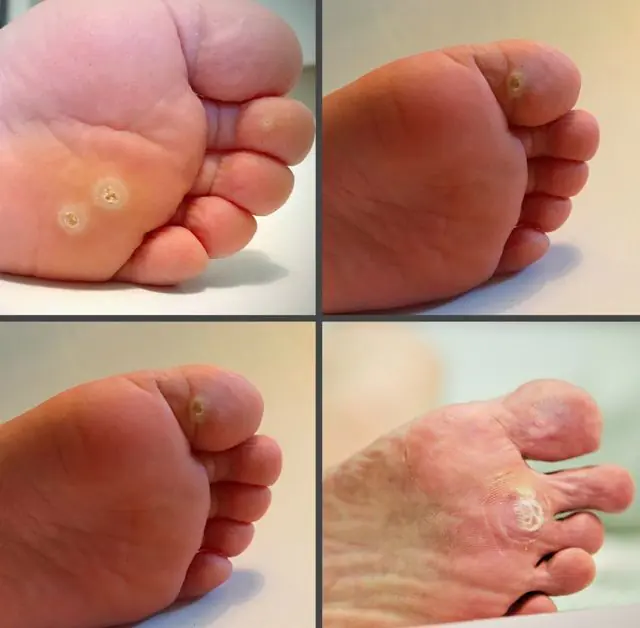
Pictured are plantar warts
Doctors do not recommend diagnosing yourself, even in the case of such a harmless, at first glance, phenomenon as a plantar wart. Sometimes they are confused with another pathology - keratodemia or palmoplantar syphiloids. In appearance, this viral neoplasm may also resemble a callus.
Only a specialist can differentiate one pathology from another. For this purpose, the diagnostic procedure dermatoscopy is performed. For a better examination of tissue, the dermatologist sometimes scrapes off the top layer of keratinized epidermis.
The fact that the doctor is dealing with a plantar wart is indicated by the absence of a specific skin pattern on the surface of the growth, as well as a characteristic sign - thrombosed capillaries. The latter look like black dots on the surface of the tumor. If the pathological formation is not a wart, then the DNA of the cells will not change and the papillary pattern will remain on the upper layer of the skin.
To determine the strain of the virus that caused the appearance of warts, a PCR blood test is prescribed. And to study the depth of skin damage by a neoplasm, an ultrasound analysis can be prescribed. If a specialist suspects that the detected growth is malignant, he recommends a consultation with a dermato-oncologist.
As a rule, patients turn to specialists for treatment of plantar warts if there is severe pain. This means that the tumor is actively growing inward and when walking, the growth compresses the pain receptors.
It is worth noting that this neoplasm often goes away on its own at an early stage of the disease, and in 30% of cases in the first few months after the onset of symptoms of the pathology. This means that a person’s defenses are strong enough and were able to suppress the development of the pathogen in the body.
Removal of plantar warts is required in the following cases:
- Severe pain when the growth is compressed directly or indirectly;
- Active growth of the tumor;
- The size of the growth has reached such a size that it interferes with walking;
- New ones began to appear near one wart.
- See also the difference between corns and plantar warts
Treatment methods for plantar warts
The most effective way to treat this pathology is to remove the growth. Also, to consolidate the result and avoid the risk of relapse, the doctor may recommend taking a course of drug therapy. An integrated approach to the treatment of plantar warts allows you to achieve maximum effect.
Treatment of plantar warts with medications
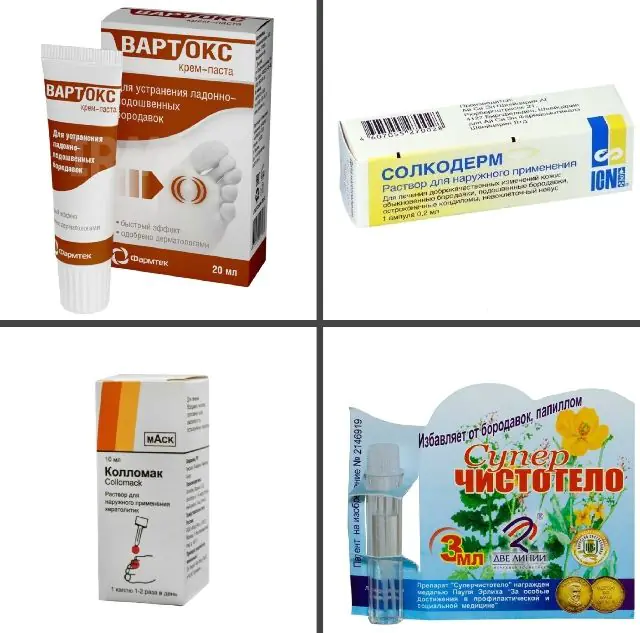
The photo shows medications for plantar warts
Nowadays, there are many special remedies for those who are looking for a way to get rid of plantar warts. They can be purchased at any pharmacy without a doctor's prescription and used at home. However, consulting a specialist in this case will not hurt.
To remove plantar warts, agents from the locally necrotizing category are used. They are quite aggressive and have a necrotizing effect on the pathologically altered epidermis. They are also able to suppress the activity of the virus to reduce the risk of HPV recurrence.
The following tools have proven themselves well:
- Solcoderm. Available in ampoules for single use. Price - about 450-550 rubles. The composition includes acetic, oxalic, lactic, and nitric acid in high concentrations. When they come into contact with the epidermis, tissue necrosis occurs. Over time, a crust forms at the site of the lesion, which falls off after 7-10 days. Usually one treatment of the wart is sufficient. Repeated application, if necessary, can be done after 7-14 days. Analogues of Solcoderm are Duofilm, Verrukacid, Condilin.
- Vartox. It looks like a pasty cream in a small tube. The average cost is about 200 rubles. This is a keratolytic agent that softens the stratum corneum of the skin and has an antiviral effect. The composition includes urea (40%) and glycyrrhizic acid (0.1%). It may take 2-5 applications to completely remove a plantar wart. An analogue of the product is Salipod.
- Collomak. Acid solution in a bottle for spot application. The cost of the product is from 400 rubles. Contains lactic acid, salicylic acid and lauromacrogol. It has a complex effect: salicylic acid softens the stratum corneum of the skin, lactic acid provokes necrosis of epidermal cells, lauromacrogol has a sclerotizing effect on capillaries. Application should be made 1-2 times a day until the plantar wart is completely removed. An analogue of this product is Duofilm.
- Super clean. It is a mixture of highly effective alkalis for removing warts. Causes local tissue necrosis and destruction of papilloma viruses. The cost of the product is from 35 rubles. An analogue is Solcoderm.
- Feresol. It is in the form of a solution for external application. The composition includes tricresol and phenol. The price of Feresol is from 200 rubles. It has a necrotic effect on the wart. It is also easily absorbed into the circulatory system and can have a toxic effect on the central nervous system. Therefore, this solution should be used with extreme caution and not exceed the dosage specified in the instructions. Analogues of the product are Verrukacid, Collomac.
- lapis pencil. A gentle cauterizing agent for those who do not know how to remove a plantar wart. Has average efficiency. The price of lapis is from 150 rubles. It is a mixture of potassium nitrate and silver nitrate. Has a bactericidal, necrotizing, disinfecting effect on the skin. You need to lubricate the wart with it several times a day until it comes off on its own. Analogues of the lapis pencil are Superchistotel, Duofilm, Collomak.
It is worth noting that if there are a lot of warts on the soles and toes, then we are talking about a general decrease in immunity and high viral activity. In this case, the doctor may recommend taking a course of immunomodulatory therapy, as well as taking antiviral drugs.
- Read also why a wart on the foot hurts
Removal of plantar warts using instrumental methods
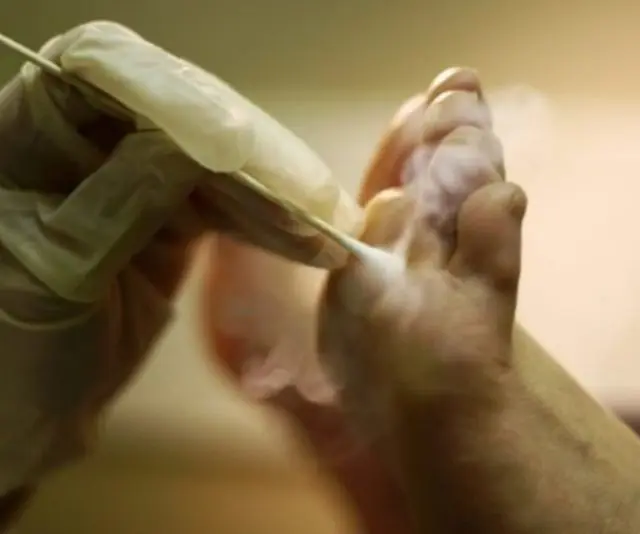
In addition to medicinal cauterizing agents, there are several quite effective, painless and fast-acting instrumental methods for removing plantar warts.
The procedure for instrumental treatment of pathology is somewhat complicated by the fact that this type of tumor grows deeply into the layers of the skin. Therefore, some methods of exposure have low effectiveness, and with deep exposure they can cause the formation of deep scars.
Let's look at the most popular and effective methods for removing plantar warts:
- Laser removal. The energy of the laser beam causes a strong increase in temperature in the tissues, followed by evaporation of diseased cells. This method of exposure makes it possible to control the depth of penetration of the beam into the dermis. Wart elimination occurs quickly, and healing lasts 5-7 days. The cost of laser removal of plantar warts is 800-2300 rubles in Russia and 300-1000 hryvnia in Ukraine.
- Cryodestruction. One of the most popular ways to eliminate tumors on the soles and toes. Deep freezing of tissues is carried out. The procedure requires special care from the doctor, since superficial treatment will not give the desired result, and the plantar wart will appear again, and too deep penetration is fraught with the formation of scars. After applying liquid nitrogen to the skin, a blister forms, which should heal itself within 7-10 days. The price of cryoremoval of a plantar wart is 500-1200 rubles in Russia and 200-450 hryvnia in Ukraine.
- Radio wave removal. Usually the Surgitron device is used, which produces radio waves of a special frequency. The latter provoke the evaporation of moisture from skin cells. There is no trauma to neighboring areas of the body, and the rehabilitation period is short and practically painless. After radio wave destruction of tumors there are almost never deep scars or complications. The price of the procedure is 2100-3000 rubles in Russia and 600-1300 hryvnia in Ukraine.
- Surgical removal. This method is rarely used due to its traumatic nature. But it can be used in cases with tumors that are too large. In this case, to remove plantar warts, a regular scalpel and local anesthesia are used. Often, after such an intervention, scars remain on the skin. The cost of surgical removal is 600-900 rubles in Russia and 180-300 hryvnia in Ukraine.
- Electrocoagulation. This method is rarely used on plantar warts, since they usually lie at great depths. The electric current can cause too much trauma to the tissue and leave a large burn and scar. Therefore, electrocoagulation can be prescribed only in the case of small tumors that are located in the upper layers of the dermis. The price of electrocoagulation is 700-1200 rubles in Russia and 250-500 hryvnia in Ukraine.
Read more about what to do if the wound does not heal after plantar wart removal.
Folk remedies for treating plantar warts
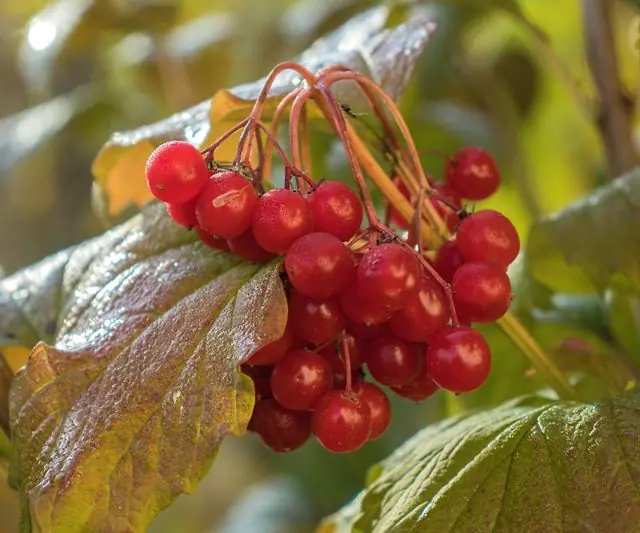
Traditional medicine offers a lot of ways to treat plantar warts. It is important to remember that these methods can be used as additional to drug treatment and only if you are sure that you are dealing with a wart.
If you don’t know how to get rid of a plantar wart, try these recipes:
- Grind a clove of garlic, add a teaspoon of concentrated vinegar and a little flour to the mixture. Knead the dough and form a small cake the size of the wart. Place it on top of the tumor and secure it with a bandage. Leave the compress on for 3 days. Remove after expiration. A dimple or ulcer should appear at the site of the wart. It should be lubricated with Vishnevsky ointment until complete healing. If one procedure is not enough, you can repeat it.
- The leaves of the pinnate Kalanchoe need to be peeled and applied to the plantar wart. Secure the compress with a bandage and leave for several hours. Then change the leaves. This procedure must be repeated for several days until the necrotic process begins in the wart.
- The juice of sour apple varieties is also good for removing plantar warts. Rub it on the new growths several times a day until they darken, decrease in size and begin to show signs of dying. Fresh rowan juice has the same functions.
- The classic way to remove plantar growths is celandine juice. It can be applied spot-on either in pure form or as part of a mixture with lard in the form of an ointment. To prepare such a cream, you need to mix lard and celandine juice in a 1:1 ratio. Apply to the growth until completely eliminated.
- Horseradish juice should be mixed with salt and ground thoroughly. The resulting mixture should be applied as a lotion to the affected areas of the foot.
- Milky dandelion juice can be applied to plantar warts several times a day until completely eliminated.
- Read more about folk remedies for plantar warts on the toes
Prevention of plantar warts
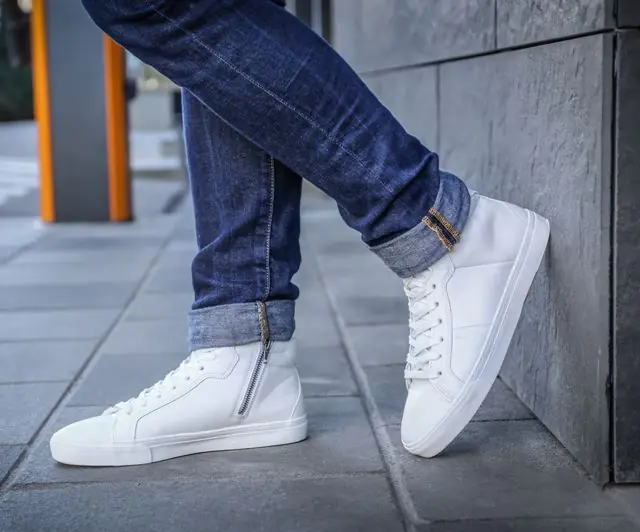
It is much easier to protect yourself from the appearance of plantar warts than to eliminate them later. Preventive measures in this case boil down to the following:
- Wear only shoes that fit properly, and do not use tight or uncomfortable shoes made from low-quality materials.
- Be sure to use slippers or change of shoes in public places such as locker rooms, gyms, swimming pools, etc.
- If you suffer from hyperhidrosis, be sure to treat this disease, otherwise it can lead to many associated complications, including plantar warts;
- Always treat injuries, scrapes, and abrasions on the feet immediately to avoid creating an “open gate” for infection.
- Try to strengthen your immune system, avoid chronic diseases, and eat right.
Read this about the benefits of nail polish for plantar warts.
How to treat plantar warts - watch the video:
If you do not know how to get rid of plantar warts, it is better to consult a specialist, especially if the growths cause you discomfort. As a rule, these growths are not life-threatening, but are caused by HPV strains with low oncogenicity. However, they can darken the patient’s life if they are in the deep layers of the dermis and cause pain. Currently, there are many ways to remove plantar warts.
- Related article: How to distinguish a callus from a plantar wart



